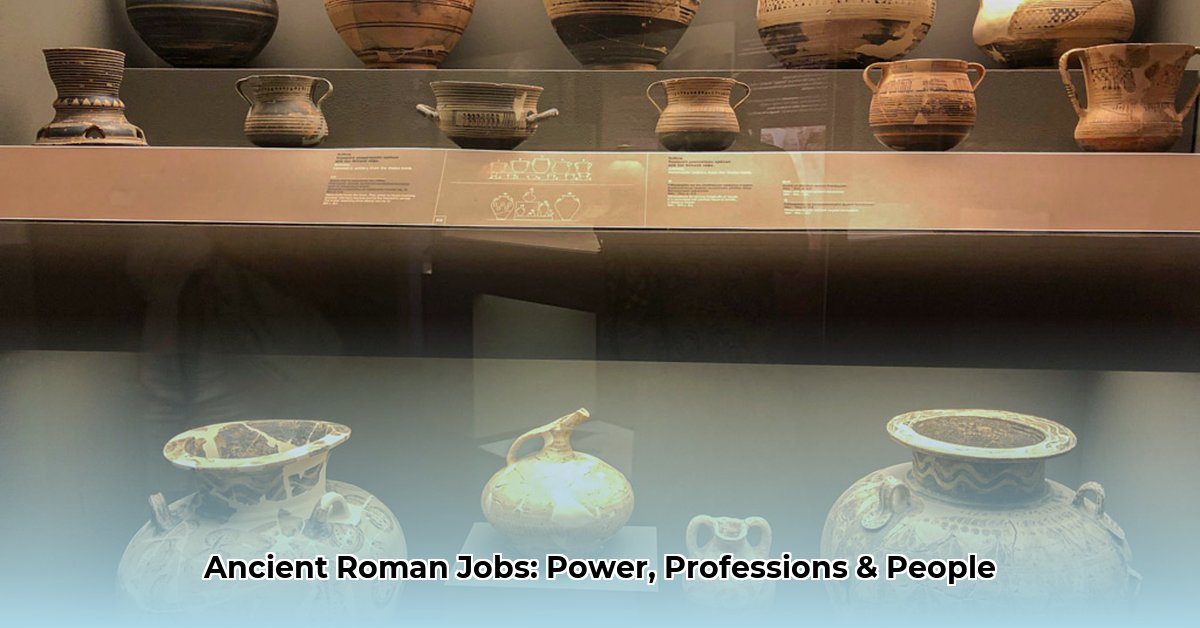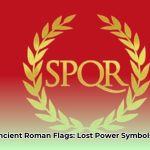Have you ever paused to consider the intricate tapestry of daily life in ancient Rome, beyond the tales of emperors and gladiatorial combat? The colossal Roman Empire, with its sprawling cities, vast trade networks, and formidable legions, didn’t simply run itself. It was sustained by millions of individuals engaged in a surprisingly diverse array of professions, each playing a critical role in the empire’s extraordinary longevity and influence.
Looking for more on this topic? Learn about careers available in antiquity. From the laborers who tilled the fertile fields to the astute politicians who shaped its laws, Roman society was a vibrant ecosystem of specialized skills and indispensable trades. This exploration delves into the essential, the influential, and even the eccentric occupations that defined the Roman world, revealing how these roles mirrored societal values, economic realities, and the very fabric of daily existence for its citizens and non-citizens alike.
The Economic Backbone: Labor and Sustenance in Ancient Rome
The foundation of Rome’s power and prosperity rested squarely on the shoulders of its workforce, particularly those who produced food and crafted the necessities of life.
Farmers: The Lifeline of the Empire
Agriculture was not merely a sector of the Roman economy; it was its undisputed cornerstone. The vast majority of the population, whether free citizens, tenant farmers (coloni), or enslaved individuals, were involved in cultivating the land. They produced essential staples like wheat for bread, olives for oil, and grapes for wine, feeding Rome’s ever-growing urban centers and its legions. This labor was often grueling, demanding resilience against unpredictable weather and pests.
Large estates, known as latifundia, dominated the agricultural landscape, frequently managed by strict overseers called vilici. These managers were responsible for organizing enslaved labor, ensuring compliance, and maximizing yields. Even seemingly mundane roles like the mensor (grain measurer) were crucial, ensuring accurate distribution of grain, a vital state function to prevent social unrest. The arator (plowman) and even the specialized viticulturist (grape grower) and olivator (olive grower) were highly skilled, their expertise directly impacting the quality and quantity of Rome’s most vital products.
Slaves: The Indispensable, Yet Unseen, Engine
Slavery was a pervasive and structural component of Roman society, impacting virtually every sector of the economy. Enslaved people, acquired through conquest, debt, or birth, formed an immense, unpaid labor force, estimated to be between 10% and 25% of the total population at various times. Their labor fueled vast agricultural operations, extracted precious resources from mines, and constructed monumental infrastructure like aqueducts, roads, and public buildings.
Beyond brute force, many enslaved individuals possessed and honed valuable skills. Educated Greek slaves often served as scriptores (scribes), contabarii (accountants), pedagogi (tutors), or even medici (doctors). Others were highly skilled artisans, working as ferrarii (blacksmiths), sutores (cobblers), textores (weavers), or pistorum (bakers) within urban settings. While their autonomy was limited and their treatment varied drastically, from brutal exploitation to relative comfort (especially for highly skilled “urban slaves”), their contribution to Rome’s economic might was immeasurable. The widespread reliance on slave labor also had profound social consequences, limiting opportunities and wages for free plebeians. A system of manumissio (manumission) allowed some slaves to gain freedom and even social mobility as liberti (freedmen), though this was often conditional.
Craftspeople & Artisans: Builders and Beautifiers of Urban Life
Roman cities buzzed with the activity of skilled craftspeople and artisans. Organized into guilds (collegia), these free citizens (and sometimes skilled freedmen or even slaves) provided the essential goods and services that sustained daily urban life.
- Faber: A general term for a craftsman, encompassing various specialties like faber tignarius (carpenter) or faber ferrarius (blacksmith).
- Lanarius: Wool worker, essential for clothing production.
- Pannarius: Cloth merchant, selling finished textiles.
- Pictor and Sculptor: Artists who created frescoes, mosaics, and statues for public buildings and wealthy private residences, beautifying the imperial landscape.
- Figulus: Potter, producing everything from everyday kitchenware to roof tiles.
- Sutor: Cobbler, maintaining the footwear for a walking society.
These trades not only enriched Roman material culture but also directly contributed to the extensive infrastructure. Their workshops lined the streets, creating bustling marketplaces and demonstrating the sophisticated specialization of Roman urban economies.
Governing an Empire: Power, Administration, and Order
Maintaining control over a vast empire required a highly structured system of governance, law, and military might, creating numerous prestigious and influential roles.
Politicians: Navigating the Cursus Honorum
For ambitious Roman citizens, particularly those from aristocratic families, public service offered the ultimate path to power and prestige. The Cursus Honorum (Course of Honors) was a strict sequence of public offices that individuals had to progress through, building experience and reputation at each step:
| Office | Role and Responsibilities | Social Standing |
|---|---|---|
| Quaestor | Managed public finances, often served as financial assistants to higher magistrates or provincial governors. | First step in the Cursus Honorum, typically for young men of senatorial or equestrian families. |
| Aedile | Supervised public works (roads, temples), organized public games and festivals, and maintained order in the markets. | Mid-level, offered visibility and opportunities to curry public favor. |
| Praetor | Administered justice, presided over courts, and could command armies in the absence of a consul. | High-ranking judicial and military office, second only to the consulship. |
| Consul | The highest elected office; two consuls served annually, presiding over the Senate, commanding legions, and proposing laws. | Pinnacle of the Cursus Honorum, held by the most powerful and influential men. |
| Senator | Members of the Senate, Rome’s advisory body; held immense influence over policy, finance, and foreign affairs for life. | Elite, typically wealthy Patricians, shaping the very direction of the Republic and Empire. |
| Censor | Maintained the census, oversaw public morals, and administered state contracts. | Highly prestigious, usually held by former consuls. |
Success in this arena required not only wealth and family connections but also oratorical skill, strategic alliances, and a keen understanding of Roman law and customs.
Military Professionals: Sentinels of Expansion and Stability
The Roman military was far more than a fighting force; it was a complex professional institution that offered significant social mobility, particularly for plebeians. Soldiers (milites) could earn regular wages, acquire land upon discharge, and even gain Roman citizenship, elevating their social standing.
Beyond combat, legionaries were skilled engineers, constructing vast networks of roads, bridges, and fortifications that facilitated trade and communication across the empire. Key military roles included:
- Legionary (Miles): The basic foot soldier, forming the disciplined backbone of the legions.
- Centurion: Commander of a century (around 80 men), highly respected for their leadership and courage, often rising from the ranks.
- Legionary Tribune: Young officers, typically from the equestrian class, assisting the legionary commander.
- Legatus Legionis: The commander of an entire legion, a high-ranking position appointed by the emperor or Senate.
- Praetorian Guard: Elite soldiers serving as the emperor’s bodyguards, wielding significant influence in Roman politics.
Legal Professionals & Bureaucrats: Pillars of Roman Order
Roman law was renowned for its sophistication, requiring a cadre of specialists to interpret, enforce, and administer it.
- Iurisconsultus: A legal consultant or jurist, providing expert legal opinions that often shaped Roman jurisprudence.
- Advocatus: A lawyer who argued cases in court on behalf of clients.
- Scriba: A public scribe or clerk, indispensable for record-keeping in government offices, courts, and private businesses.
- Publicanus: A tax collector for the state, often a controversial but essential figure for funding the empire.
- Curator Viarum: An official responsible for overseeing the maintenance and construction of roads, a vital part of Roman infrastructure.
These roles ensured the smooth functioning of the state, from financial administration to the impartial (theoretically) application of justice.
Daily Life and Services: Maintaining the Roman Way
Beyond the grand institutions, countless everyday jobs kept Roman society running, from feeding its citizens to nurturing their minds and bodies.
Merchants & Traders: Facilitators of Commerce
Rome’s vast network of roads and its control over the Mediterranean Sea made it a hub of commerce. Merchants (mercatores) and shopkeepers (tabernarii) were crucial to this economic vitality, moving goods across the empire and beyond. From exotic spices and silks from the East to essential grains from Egypt, trade routes pulsed with activity. The Argentarius (moneylender or banker) and Nummularius (coin dealer) played vital roles in managing the financial transactions of this bustling economy. Markets like the Forum Boarium (cattle market, which evolved into a banking district) were central to urban life.
Food & Hospitality: Sustaining the Population
With large urban populations, the preparation and distribution of food were major enterprises.
- Pistor: Baker, providing the daily bread that was a staple of the Roman diet.
- Popinarius / Caupona: Owners or workers of popinae (fast-food stalls) and cauponae (inns), offering quick meals and lodging to travelers and city dwellers alike.
- Piscator: Fisherman, supplying fresh produce from rivers and the sea.
- Lanio: Butcher, providing meat.
These professions were ubiquitous in any Roman town, reflecting the diverse culinary habits and the need for convenient sustenance.
Medical Practitioners: Healing and Health
While ancient Roman medicine drew heavily from Greek traditions, medical professionals were highly respected.
- Medicus / Medicatrix: General physicians, both male and female, who treated illnesses and injuries.
- Obstetrix: A midwife, essential for assisting women during childbirth.
- Chirurgus: A surgeon, performing operations often with surprisingly sophisticated instruments.
Many medical practitioners were educated slaves or freedmen, demonstrating the value placed on medical knowledge regardless of social origin.
Educators: Cultivating Minds
Education was valued in Roman society, especially for the elite, though basic literacy was more widespread than often assumed.
- Litterator: Taught basic reading, writing, and arithmetic.
- Grammaticus: Taught literature, particularly Greek and Latin classics.
- Rhetor: Taught public speaking and rhetoric, crucial for political and legal careers.
- Librarius: Scribe or copier of books, essential for the dissemination of knowledge before printing.
These roles ensured the transmission of Roman culture, history, and the skills needed for administration.
Beyond the Mundane: Arts, Entertainment, and Peculiar Professions
Roman society celebrated spectacle and leisure, creating unique opportunities for those who entertained or performed specialized, sometimes unusual, services.
Entertainers: “Bread and Circuses”
The Roman appetite for grand spectacles created a vibrant entertainment industry.
- Gladiator: Professional combatants, often slaves or condemned criminals, trained to fight in amphitheatres like the Colosseum. While their lives were perilous, successful gladiators could achieve immense fame and even wealth.
- Charioteer: Highly paid celebrities who raced chariots in the circuses, inspiring fervent fan followings for their “stables” (e.g., the Blues, Greens, Reds, Whites).
- Ludius / Actor: Stage performers in plays and mimes, though their social standing was often low, akin to prostitutes.
- Citharoedus / Tibicen: Musicians who played stringed instruments (lyre, cithara) or wind instruments (tibia), often accompanying plays or private banquets.
- Mimus: Performers of mimes, a popular form of entertainment focusing on comedic or satirical skits.
The public spectacles were not just for amusement; they were crucial for maintaining social order, exemplified by the phrase “panem et circenses” (bread and circuses).
Artists and Architects: Shaping the Roman Aesthetic
Beyond their functional roles, artists contributed to Rome’s enduring aesthetic legacy.
- Architectus: Architects designed monumental structures, public buildings, and grand villas, often working closely with engineers.
- Mosaicista: Mosaic artists created intricate floor and wall decorations.
- Vascularius: Metalworker, producing fine bronze and silver vessels.
Unusual and Highly Specialized Roles
Some Roman jobs highlight the unique cultural facets and technologies of the time:
- Fuller (Fulgar): Responsible for cleaning and treating woolen cloth. This was a particularly unpleasant job, often involving treading cloth in vats of human urine (for its ammonia content) to achieve a brighter white.
- Armpit Hair Plucker (Tensarius): While seemingly trivial, personal grooming was important, and specialized individuals performed tasks like hair removal in bathhouses.
- Whipping Boy: A rare and peculiar role, where a young boy received physical punishment in place of a young prince or royal charge when they misbehaved. This was meant to teach the prince empathy through the suffering of another.
These roles, however niche, provided insights into Roman societal norms regarding hygiene, punishment, and even the nuances of personal care.
Conclusion: A Mirror of Roman Society
The vast array of jobs in ancient Rome provides a profound lens through which to understand one of history’s greatest civilizations. From the backbreaking labor of farmers and slaves, who provided the sustenance and infrastructure, to the intricate political dance of senators and consuls who governed an empire, each profession was inextricably linked to Rome’s economic vitality, social structure, and cultural values.
The dynamism of these ancient Roman jobs, their constant evolution, and the social stigmas or pathways to mobility they offered, paint a vivid picture of a complex, stratified, yet remarkably adaptable society. Even today, echoes of these ancient professions can be seen, reminding us that the fundamental human needs for sustenance, order, and connection have shaped civilizations across millennia.










